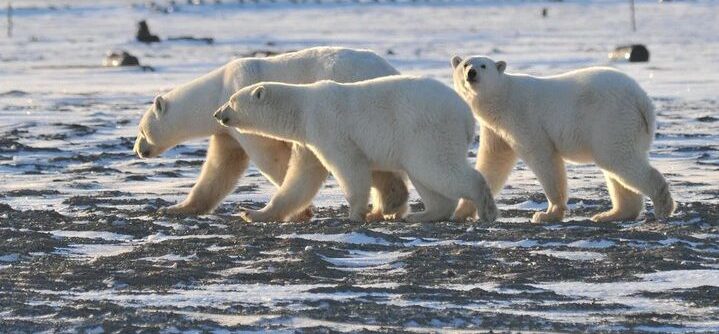#ARCTIC. #SIBERIA. THIS IS TAIMYR. The Russian Geographical Society and the Russian Ministry of Natural Resources specialists, the Wrangel island reserve employees and environmentalists will track the polar bears population using artificial intelligence technologies. On Wrangel island, between the East Siberian and Chukchi seas, a joint complex expedition of the Russian Geographical Society (RGS) and the High Command of the Navy Umka-2022 has started.
The polar bear habitat is changing due to the ice cover area decrease. For ten years, the Russian Geographical Society has been conducting expeditions to determine the number and study the polar bear population. Scientific groups studied the predator on the Arctic ocean archipelagos – Franz Josef Land and Novaya Zemlya. The scientists used camera traps and satellite observations to track the polar bears’ paths. Very often, the studies results turned out to be biased, since the animal could damage or throw off the satellite collar.
The 2022 expedition will use long-range unmanned aerial vehicles, which will significantly speed up and facilitate the observation process. One of the polar bears’ “maternity hospitals”, a nature reserve on Wrangel island, has become a scientific testing ground. Traditionally, from 300 to 500 she-bears come there every year. Avoiding intrusion into the animals’ living space, the expedition members will use three drones to conduct multispectral aerial photography in seven locations. Scientists will track the predators’ routes and study the habitats of other Arctic animals – walruses, ringed seals, seals, wolverines and musk oxen.
During this time, drones will take tens of thousands of pictures, and a neural network will help analyze a large amount of data, which is able to recognize photos with bears and sort them. The technology will have to distinguish an adult bear from a bear cub, identify each bear individually by special signs – scars, scratches on the face, wrinkles in the nose area.
In addition to remote study of the polar bears’ behavior and movement, specialists from the Russian Geographical Society will monitor the ecological state of Wrangel island, assess the level of anthropogenic impact on the ecosystem for a comprehensive report on planning further activities to clean up the island.
Earlier, This Is Taimyr reported on an operation to rescue a polar bear from Dikson island, in which doctors found multiple gunshot wounds. In the Moscow zoo, the bear was named Dikson.
Follow us on Telegram, VKontakte.
Text: Denis Kozhevnikov, Photo: author



